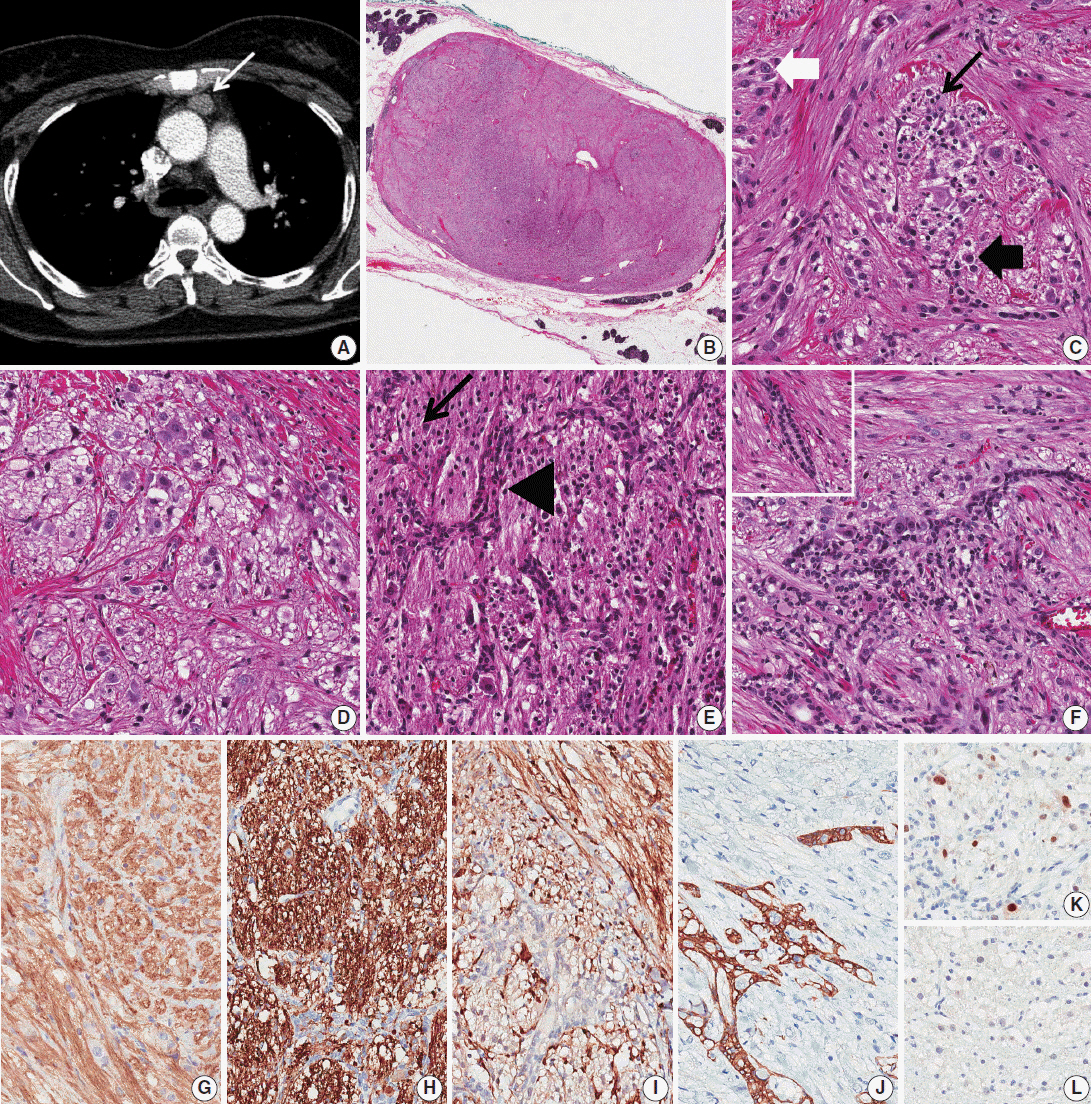J Pathol Transl Med.
2016 Mar;50(2):165-167. 10.4132/jptm.2015.07.15.
A Rare Case of Thymic Gangliocytic Paraganglioma
- Affiliations
-
- 1Department of Pathology, Samsung Medical Center, Sungkyunkwan University School of Medicine, Seoul, Korea. hanjho@skku.edu
- 2Department of Thoracic Surgery, Samsung Medical Center, Sungkyunkwan University School of Medicine, Seoul, Korea.
- KMID: 2211385
- DOI: http://doi.org/10.4132/jptm.2015.07.15
Abstract
- No abstract available.
MeSH Terms
Figure
Reference
-
1. DeLellis RA, Lloyd RV, Heitz PU, Eng C. World Health Organization classification of tumors of pathology and genetics of tumors of endocrine organs. Lyon: IARC Press;2004. p. 162–3.2. Okubo Y, Wakayama M, Nemoto T, et al. Literature survey on epidemiology and pathology of gangliocytic paraganglioma. BMC Cancer. 2011; 11:187.
Article3. Weinrach DM, Wang KL, Blum MG, Yeldandi AV, Laskin WB. Multifocal presentation of gangliocytic paraganglioma in the mediastinum and esophagus. Hum Pathol. 2004; 35:1288–91.
Article4. de Montpréville VT, Mussot S, Gharbi N, Dartevelle P, Dulmet E. Paraganglioma with ganglioneuromatous component located in the posterior mediastinum. Ann Diagn Pathol. 2005; 9:110–4.
Article5. Weissferdt A, Kalhor N, Liu H, et al. Thymic neuroendocrine tumors (paraganglioma and carcinoid tumors): a comparative immunohistochemical study of 46 cases. Hum Pathol. 2014; 45:2463–70.
Article6. Okubo Y, Nemoto T, Wakayama M, et al. Gangliocytic paraganglioma: a multi-institutional retrospective study in Japan. BMC Cancer. 2015; 15:269.
Article7. Ogata S, Horio T, Sugiura Y, Aiko S, Aida S. Duodenal gangliocytic paraganglioma with regional lymph node metastasis and a glandular component. Pathol Int. 2011; 61:104–7.
Article
- Full Text Links
- Actions
-
Cited
- CITED
-
- Close
- Share
- Similar articles
-
- Periampullary Gangliocytic Paraganglioma Successfully Treated by Endoscopic Mucosal Resection
- First Report of a Gangliocytic Paraganglioma Arising in a Tailgut Cyst
- Gangliocytic Paraganglioma of the Duodenum
- A Case of Gangliocytic Paraganglioma of the Ampulla of Vater Presenting as Jaundice
- A Incidentally Diagnosed Duodenal Subepithelial Mass: Gangliocytic Paraganglioma Treated by Endoscopic Mucosal Resection


